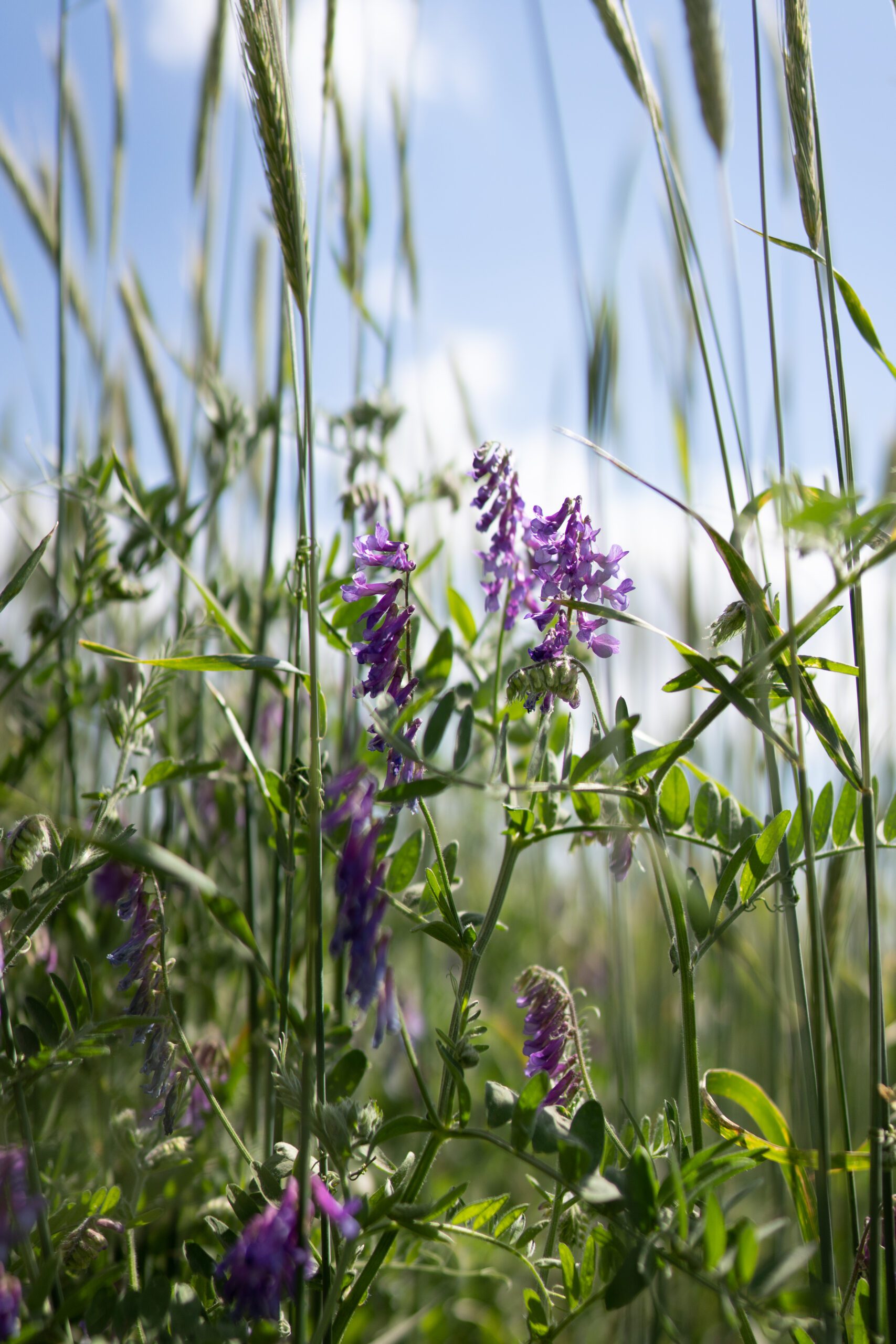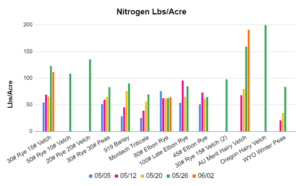
We often get asked the question: “How much nitrogen can I produce for next year’s corn or milo crop if I plant a cover crop this fall?” It is a very timely question, as now is the time to be thinking about planting cover crops for spring nitrogen fixation!
The answer to the question, like most questions, is “It Depends”… It depends on these main factors
1. How many legumes do you have in your cover crop mix? A properly inoculated legume cover crop can take advantage of the 30,000 tons of atmospheric nitrogen above every acre of crop ground and convert some of that to a plant available form. The more legumes, the more potential. We have seen as high as 250# of N per acre with a full seeding rate of legumes down to 20-40# of N per acre with a small amount of legumes in the mix.
2. Will your legumes overwinter? If your legumes do not overwinter, then your nitrogen fixation is limited to the fall growth that you will get, which is still valuable, but will not give you top end production. Hairy vetch is one of the best overwintering legumes, followed by winter lentils, winter peas, and some winter clovers. Oftentimes the ability of a plant to overwinter is not related to temperature so much as planting depth, planting date, and the amount of snow cover during cold weather. In 2021, we hit -34 degrees F here in Bladen, but we had one of the best years ever for cover crop winter survival because we had 10 inches of snow on the ground when it was that cold. Other years we will see significant winterkill at 0 degrees when we have no snow cover – especially when conditions are very dry.
3. How early can you get the legumes planted? The fall planting date of an overwintering cover crop is directly correlated to the speed of growth and the amount of biomass produced come spring time. For legumes that do not get planted until late in the season, they typically are pretty slow to get out of the gate in the spring, and thus generally do not produce as much nitrogen for the summer cash crop. We feel that the ideal time to plant a legume cover crop for spring nitrogen fixation is 2-4 weeks before your average first frost date for your area. Decent results can still come from planting up to 2 weeks after your frost date, but once you push 3-4 weeks (or more) past the frost date, you likely will have more nitrogen fixing potential with an early spring planted cover crop.
4. How long can you let the legumes grow in the spring before termination? This is really important as the amount of nitrogen fixed is directly related to the biomass growth of the cover crop, which is a function of how long the cover crop is allowed to grow. Legumes such as hairy vetch and winter peas tend to break dormancy as quickly as cereal rye so their spring growth will be limited if the goal is early termination for early corn planting. But as the spring warms up, the legumes really take off and it is not uncommon to see biomass and N accumulation double every week from about the week before your average last frost date to three weeks after your last frost date. While this may or may not delay your cash crop planting, it will certainly help you accomplish your goal of producing as much nitrogen as possible.
As you can see from the below graph of the data points from our 2022 Overwintering Test Plots (All planted October 1st 2021) , the amount of nitrogen fixed was largely a result of the plant species in the mix and the date the biomass was tested. To learn more about the data from our 2022 Overwintering Test Plots check out this article on our website.

If you want to fix nitrogen for your cash crop next year, now is the time to be making a plan for how to do it.
If your goal is more focused on weed suppression, erosion prevention, or building your soil biology, there is a cover crop plan for that as well.
We are here to help, so please reach out to any of our experienced and helpful sales team members by phone or email and we will help you achieve your soil health goals! New to Green Cover? Give our office a call and we’ll get you directed to someone who can help. 402-469-6784
Feature image courtesy of: Peyton Ward
Want to talk with one of our expert sales representatives?
Fill out this form or give us a call today. 402-469-6784.